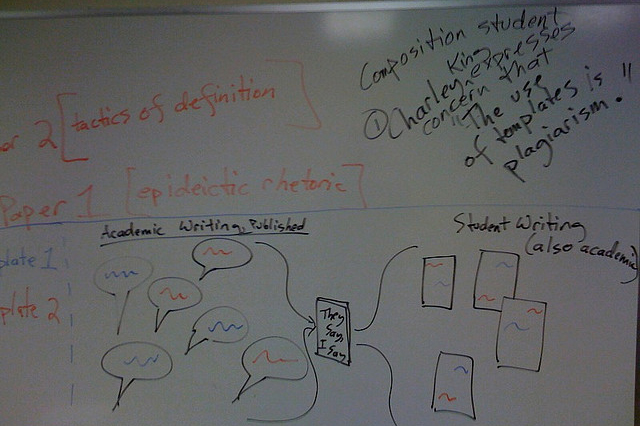Learning Outcomes

1. Rhetorical Composition
Students compose texts in multiple genres, using multiple modes with attention to rhetorical situations.
Through composing a variety texts and using a number of composing technologies, students demonstrate understanding of audience, purpose, and constraints. They use and adapt generic conventions, including organization, development, and style.
2. Critical Thinking and Reading Resulting in Writing
As they undertake scholarly inquiry and produce their own arguments, students summarize, analyze, synthesize, and evaluate the ideas of others.
Students may encounter the ideas of others in a variety of texts generated both inside and outside the classroom: print, visual, aural, oral, spatial. Students learn accepted and ethical ways to integrate other texts into their work, rightly handling citation and adaptation. Students use writing as a critical thinking tool.
3. Writing as Process
Students practice writing as a process, recursively implementing strategies of research, drafting, revision, editing, and reflection.
In learning about their own writing process and doing guided reflective writing about that process, students learn to critique their own and others’ works. They also become aware that it usually takes multiple drafts to create and complete a successful text. Students can articulate how they approach different kinds of writing tasks.
4. Digital Citizenship / Digital Identity
Students use technology appropriately and engage responsibly in online spaces.
Students conduct themselves according to norms of appropriate, responsible behavior with regard to technology use. They explain and practice good digital citizenship and utilize the concepts of intellectual property (including copyright, fair use, and creative commons licensing) and appropriate citation and attribution of sources. Students reflect on learning as part of a deliberately constructed digital identity, which they construct in part through the design and publication of interlinked web sites. Students conduct inquiry, research, critique, and publication in electronic environments.
5. Visual Literacy
Students demonstrate visual thinking strategies
.
Students employ effective strategies to analyze and interpret visual information. Students identify and question visual and written patterns. Students experiment, assemble, and arrange visual and written documents of their own.
All of the activities and assignments that we engage in over the course of this semester are designed to achieve certain learning objectives, which are listed below under 5 different categories. This list of learning objectives has been developed in accordance with the Council of Writing Program Administrators’ Outcomes Statement for First-Year Composition as revised and adopted in 2014 (v. 3.0) and with the learning outcomes statement developed by the Emory Writing Program and Domain of One’s Own @ Emory.
